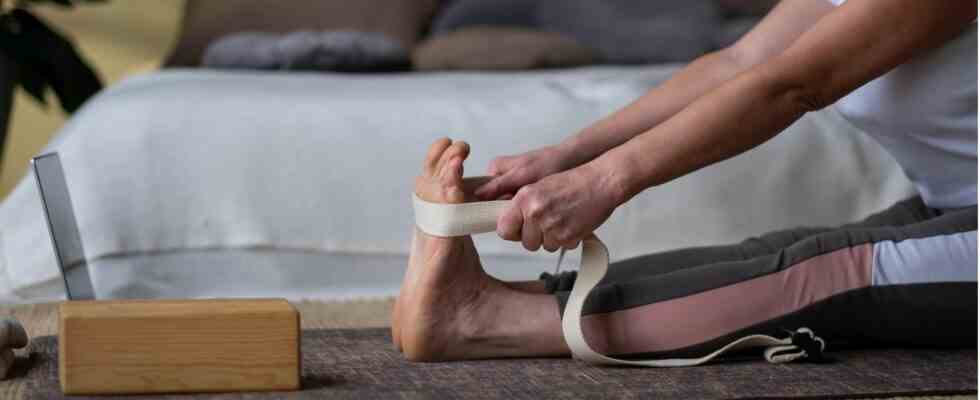asanas
Stretching Aid for Beginners and Pros: How to Use a Yoga Strap
Asanas can be performed more easily with a yoga strap
© fizkes / Getty Images
For yoga exercises, there are practical aids to support the asanas, which are performed while sitting or standing: such as a yoga mat, a yoga block – or even a yoga strap: It is intended for beginners (and professionals) as a gentle stretching aid serve for the muscles. Application tips.
The yoga belt is part of the basic equipment for many yogis: it supports easy as well as difficult asana positions and is equally suitable for beginners and professionals. This handy tool can be used at any time to achieve gentle stretches that are not normally possible while minimizing the risk of injury. But which material is recommended for use, how big should a yoga strap be – and how do you use it in practice? We’ll tell you.
Asanas: A yoga strap offers these benefits
Whether standing, sitting or lying down: In yoga, most asanas are accompanied by stretching. It is often difficult, especially for beginners, to maintain balance during balance exercises – the belt can also be a practical support here. For example, placing a loop around your foot and grasping the ends of the strap with both hands can increase the stretch. Both lying down and standing up. The 90-degree angle also gives you more stability when you want to do a shaky balance exercise. If you want to practice different asanas while sitting, the yoga strap can also be of help: for example, to hold positions longer, to fix the hips or to keep the back straight. The ligaments and muscles are relieved. Read more application tips below.
Buying a yoga belt: this is what you need to know
Beginners and professionals like to buy a new yoga belt in combination with a yoga block. However, before you sign up for a set decide, you should consider the following criteria:
The material: A classic yoga strap is usually made of cotton or polyester made – that makes it soft and durable. Both materials absorb moisture so that the strap cannot slip out of your hands even during strenuous exercises. They are also easy to clean in the washing machine. The only difference: unlike synthetic models, yoga straps are made of Cotton particularly skin-friendly.
The buckle: There is usually a D-shaped one on one end of the yoga strap Metal buckle: It is used to vary the length or to tie the strap into a closed loop – this makes it easier to hold and grip in some positions. There are also buckles made of plastic, but these are not as durable.
The length: Before you decide on a yoga strap, you should think about the length – not only depending on your height, but also on the exercises to be performed. Because the fact is: the longer the belt, the more versatile you can use it. Most models are between 180 and 300 centimeters long, but thanks to the integrated buckle you can adjust and vary the length at any time – depending on the asanas.
The width: Most models are no wider than three and four centimeters. In fact, the width is not as important in yoga as the length, so it is just a matter of personal taste when purchasing whether you prefer a narrower or wider yoga strap when practicing your asanas.
How to use a yoga strap
On social media platforms like YouTube, there are countless instructions from well-known yogis like Mady Morrison, which clearly explains how to use a yoga strap. But we find this video even more descriptive:
Before you get started with the exercises, here are a few tips:
- Always practice the asanas slowly and consciously.
- Hold each position for a maximum of 30 seconds.
- Make sure you breathe evenly and without stress.
- Don’t make any jerky movements.
- Stretch your muscles carefully and with care.
- Close your eyes for better perception.
- Repeat each exercise to your own liking.
You might also be interested in:
This article contains so-called affiliate links. Further information are available here.


